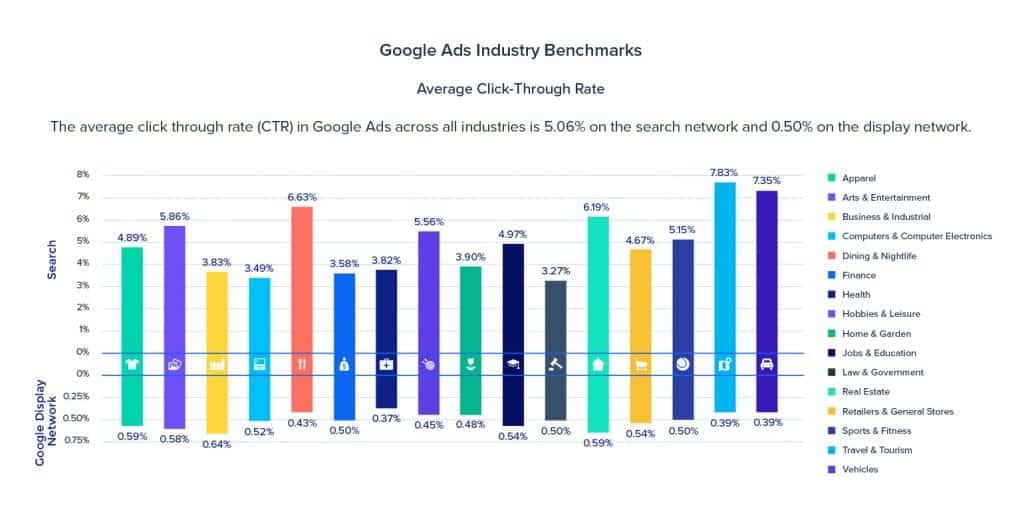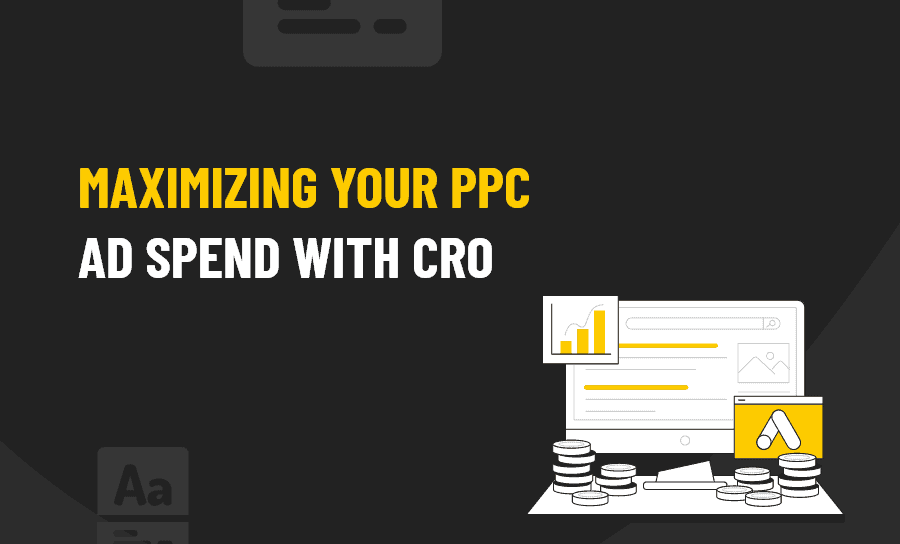As you know (we hope) optimizing your conversion rate (CRO) is the process of optimizing your sponsored search ads, landing pages and overall website design to increase your conversion rate. In other words, it should be a part of everything you do in digital space.
If you run PPC ads though, getting your CRO right is of especial importance. You are paying for PPC ads – often quite a lot – and while they drive what some call ‘easy traffic’ if that traffic does not convert then all that money’s wasted. And no business can afford that.
In other words, the goal of PPC CRO is to have as many people as possible driven by PPC to your site convert or complete your wanted action. CRO is gaining popularity quickly because it’s seen as a way to increase sales profits without increasing your advertising spending.
Conversion rates can vary widely depending on your business model and industry, but anyway, everyone wants a better one! Below you’ll find average conversion rate benchmarks in AdWords across common industries:

As you can see, the conversion rate varies significantly, and it may not be anywhere near as good as you had imagined (which is why relying solely on PPC for traffic is never going to work out.)
Of course, even if your conversion rate for AdWords is average for your vertical, a higher conversion rate is better for the business. Why settle?
Optimizing the conversion rate of your PPC campaigns requires time, patience and resources. And probably more than a little testing if you are doing it right. Nonetheless, familiarizing yourself with the basic concepts of PPC conversion optimization is more than worth your time, because you can optimize the chances that a potential user who comes from a PPC ad to your site becomes a successful lead or a paying customer.
There’s a range of things you can do to improve your PPC conversion efficiency. Let’s take a look at some of them now.
Write compelling, clickable PPC advertisements that are highly relevant to the keyword/search query and the audience you are targeting.
Too many people waste their money on PPC ads that are badly written. Just because you are paying Google (or Facebook, or Bing or whoever) to place an ad does not make it automatic clickbait. In fact, not only does your PPC ad copy have to be clickable it has to overcome the PPC fatigue audiences have fallen into over the years.
PPC fatigue refers to the fact that many browsers have come to overlook or even ignore PPC ads in general. Some people do ‘like them’, and state they are not averse to clicking on a PPC ad to get to a product or service they are looking for, but almost as many say they don’t trust them, especially if they are badly written or seem like they will lead to a spammy/low-value site.
Bad copy gives that impression. You may think people have stopped caring about such things, but that’s not the case. If your copy is misspelt, grammatically incorrect or just plain cheesy, it’s not going to instil in users the trust needed to click on a link that leads to an ‘unknown’ destination.
Your copy also needs to be highly relevant to the keywords you are targeting. Research has shown that people who regularly click on paid ads are consumers in the later stages of the purchase cycle. If your PPC ad truly leads to what they are looking for, they are more likely to convert. If it does not, they will click away fast. Which brings us to the next point:
Maintain a high degree of relevance among your ads and the respective landing pages.
Your landing page should deliver on your ad’s promise (the call to action) and make it easy for the searcher to complete that action, whether it’s signing up for a newsletter, downloading a white paper or buying a product or service.
In simple terms, give your audience what they clicked for. For example, if your PPC copy promises chocolate cake, give them chocolate cake when they get to your site. Don’t use that valuable click to try to sell them on ice cream instead.
Do that, and you’ll lose trust fast with most people, and you certainly risk losing out on a sale that would otherwise have been made if you had directed the user to where they thought the PPC ad was leading them.
Check the Configuration of your Landing Page.
It’s important, in terms of PPC ad conversion that you A / B test as much as possible to find the right layout, copy and colors to move the highest percentage of site visitors to complete your form, call in, or otherwise convert to a valuable lead or customer.
Poorly designed landing pages will result in lower than expected conversions but will also cause your Quality Score to decrease. A lower Quality Score will increase your cost per click, cost per ad campaign, and reduce your ad rank to make it more difficult to win spots in Google’s ad auctions in the first place for your desired keywords.
So, what’s a perfect landing page? There probably isn’t one, but successful page management best practices include:
- Compelling headline – Produce a striking headline specific to your PPC keyword and that compels prospective customers to stay on the website to accomplish the desired actions.
- Concise, targeted copy – Your page content should communicate your offer clearly, and speak directly to the keywords associated with that ad group. Use the bulleted lists and shorter paragraphs to avoid the copy becoming too long or overwhelming for people to read through.
- Carefully crafted calls to action – Your calls-to-action (CTAs) should be eye-catching and clickable. Make sure your CTA button stands out clearly, appears clickable and uses short, relevant text.
- User-friendly lead capture form – A successful leads capture form provides all the fields required to fulfil the desired action, but not so many that prospects are visually overloaded and put off. Think carefully about what information is really required to capture the lead when designing your form. Make it as easy as possible for users to complete the action. The more ‘work’ they are asked to do, the less likely they are to do it.
- Strive for attractive overall design – PPC landing pages should be tidy and uncluttered, conveying both confidence and professionalism to prospective customers. It should also be relevant to the keywords users click through from on a PPC ad. Ensure that they can see right away that they are indeed in the right place.
Don’t Put All Your Eggs in the PPC Basket
PPC advertising can be successful, especially for start-ups and new products. But PPC alone is something that you should never rely on to get the most out of your CRO efforts.
Some people mistakenly think that if they pay for PPC ads, they don’t have to concentrate too hard on organic SEO and converting organic traffic. The truth is PPC ads can be effective, but you need organic traffic conversions too, to truly realize the potential of your marketing efforts, no matter what niche you are in.
Need help with any kind of CRO? Want to learn more about what paying more attention to converting ‘traffic’ and ‘leads’ into paying customers will mean for your business? Get in touch; our experts are waiting to talk to you.








